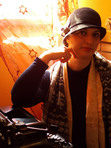A Walk Up O’Connell Street – History in the Heart of Dublin
I’m very thrilled to host today fellow historical writer and history buff David Lawlor (you might have spotted him on a few of my Gang Roundups).
David is a lover of Irish history, especially the wars for Ireland’s independence of the 1900s, and no surprise, since his family - especially one of his granddads - was actively involved in the War of Independence and the Civil War. If you are into such matters, don’t waste any time and head over to David’s blog, History with a Twist, where he blogs about late XIX/early XX century history with a particular focus on Irish wars of independence. Or buy one of his novels, you’re just as likely to learn a lot about Ireland early 20th century history.
It’s no chance that I ended up on David’s blog, I am indeed (have always been) a lover of Irish history, which only became worse when, in the late 1990s, I visited Ireland for the first time. I learned very quickly that while outside of Ireland people think the most important and fascinating part of their history is back in the Celtic times, for Irish people the most important part of their history (I’m almost tempt to say the only notable part at all) is their fight for independence. Which is a very intense part of history, if you ask me. In fact, even if I did visit Tara Hill and many other Celtic sites (and loved it), if you are to ask me what historical site you should absolutely visit when in Ireland if you just had one choice, I’d said Kilmainham Gaol.
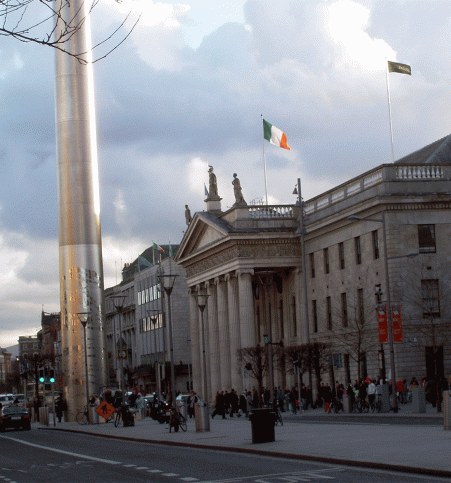 Dublin is the perfect place to come in contact with the history of Ireland’s independence. There are so many significant places, although maybe no one more significant than O’Connell Street. That’s why I asked David if he would guide us down the boulevard and point to us the most important historical spots.
Dublin is the perfect place to come in contact with the history of Ireland’s independence. There are so many significant places, although maybe no one more significant than O’Connell Street. That’s why I asked David if he would guide us down the boulevard and point to us the most important historical spots.
O’Connell Street is undoubtedly the heart of Dublin. The main fashionable shops are here, some important services (like the General Post Office), cinemas, hotels, tourist spots. Today, it is a beautiful, modern and elegant boulevard, but it hasn’t always been like this. The first time I came to Dublin to study English, my English teacher told us students that O’Connell Street was coming back to life then after being quite a dangerous and degraded spot through the 1970s and 1980s.
Through the couple of decades I’ve been frequenting Dublin, I’ve seen O’Connell Street transforming… and still remaining the same, with her historical spots and her patriotic monuments. This seems a constant in O’Connell Street’s life, changing and still remaining the same.
When you come to O’Connell Street from the old city centre, crossing O’Connell Bridge, you won’t miss the first, important monument of the boulevard, the statue of Daniel O’Connell, who stands at the end of the bridge and the head of the street. To me it looks like the most imposing monument on the street (well, if you take out a certain far more recent monument, that is), and rightly so, since I understand Daniel O’Connell to be a giant of Irish history.
O'Connell Street is the heart of Dublin, her living life and memory #Dublin #Ireland
Click To Tweet
David Speaks
Daniel O'Connell Statue
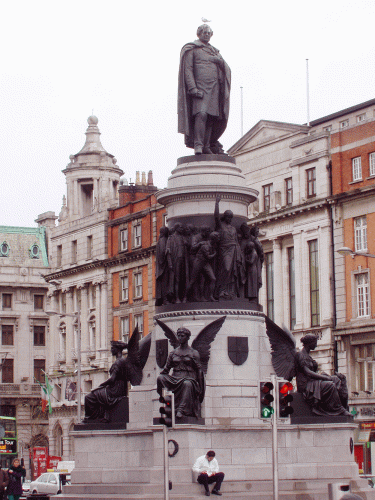 I suppose at over 40-foot high it should be imposing – the man it honours was more than so. O’Connell (1775-1847) was a lawyer who became one of Europe’s most influential politicians. He successfully campaigned for Catholic emancipation – the bid to free Catholics from the prejudicial laws of the day, including the right to sit as MPs in parliament.
I suppose at over 40-foot high it should be imposing – the man it honours was more than so. O’Connell (1775-1847) was a lawyer who became one of Europe’s most influential politicians. He successfully campaigned for Catholic emancipation – the bid to free Catholics from the prejudicial laws of the day, including the right to sit as MPs in parliament.
He also fought for tenants’ rights in Ireland when land was the preserve of wealthy landlords who ran their property like mini-fiefdoms.’
The people loved O’Connell – they called him ‘The Liberator’. He was a great orator, who would hold ‘monster meetings’ across the country which were attended by tens of thousands.
So, this bronze statue on granite from Dublin’s Dalkey quarry, is deservedly imposing. Its sculptor, John Henry Foley, was a very successful artist in his day, but he was a controversial choice for the commission. Although Irish-born, he lived in London, and some resented sending the £10,000 fee abroad when it could be spent in Ireland.
Foley died in 1874, leaving the sculpture unfinished. His assistant, Thomas Brock, would eventually complete it, and it was unveiled in 1882.
It’s built in three sections – O’Connell at the top, staring out across the bridge which is named after him. At the centre is ‘Ireland’ in form of a woman, holding the Act of Emancipation in her hand as she points at O’Connell. There are almost 30 other figures of tradesmen and peasants, artists, doctors and priests. Finally, at the base are four winged victories (courage, patriotism, fidelity and eloquence – traits for which O’Connell was known.
If you look closely at the angels, you’ll see that two of them have bullet holes… honourable wounds incurred during the Easter Rising in 1916.
GPO (General Post Office)
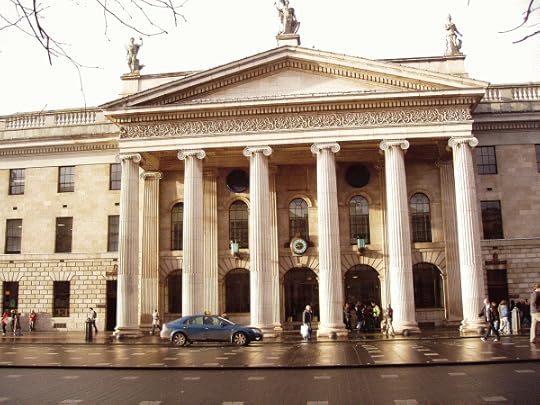
The street that bears O’Connell’s name was once called Sackville Street, and it was here at the GPO – General Post Office – halfway up the grand thoroughfare that 1916’s rebel leaders based their headquarters during the Easter Rising. It was completely gutted that Easter week. If you look at the portico’s pillars you can still see the damage done by all that fighting.
I remember in 1979, when 12 years old, I was raising funds for the boy scouts by shining shoes outside the GPO for a week. One day, a very old man stopped to talk to me. He pointed at the building and said that he had fought in there in 1916.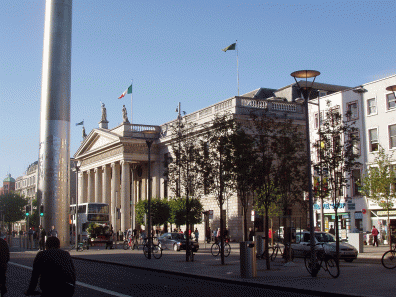 I was mildly interested, half listening to him as I scanned the passing crowds looking for customers for my shoe-shine stand. After a while he shuffled off and was lost among the throng. It galls me to this day that I never took the time to listen properly to what he had to say… what a missed opportunity.
I was mildly interested, half listening to him as I scanned the passing crowds looking for customers for my shoe-shine stand. After a while he shuffled off and was lost among the throng. It galls me to this day that I never took the time to listen properly to what he had to say… what a missed opportunity.
There are two doorways into the GPO on the Princes Street-side of the building. It was while standing at one of these doors in 1916 that rebel leader James Connolly was shot in the ankle. After the surrender and unable to stand, he would be placed in a chair and executed by firing squad.
The rear entrance to the old Irish Independent newspaper offices was on Princes Street and I would always stare at that strip of pavement as I went in to work, wondering exactly where Connolly had stood when he was hit. It’s one of the things I love so much about Dublin – that the history is all around. You can almost hear the crack of rifle fire and smell the cordite from the fighting.
Clerys Department Store
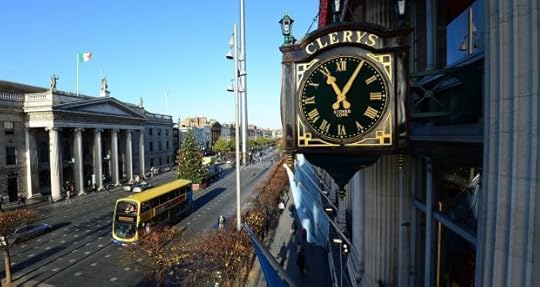
Opposite the GPO is the old Clerys department store. Both it and the surrounding shops were looted during the early stages of the rising. There are many accounts of people ignoring the pleas of the rebels and filling their arms with goods. My then teenage grandmother was one of those looters, and in my parents’ house to this day we have three soup bowls with a Milan stamp on the back that she ‘liberated’ during those seismic events of Easter Week.
Henry Street
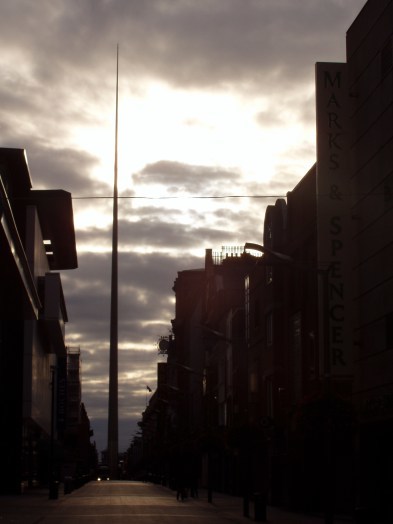
Let’s take a quick walk up Henry Street, on the right side of the GPO. It’s at this side entrance of the building that the rebels made a dash from the burning building, braving British gunfire to reach Moore Street, just a few yards away. They broke into some buildings there and held out for a few more hours until Padraig Pearse eventually formally surrendered to the British commander, General Lowe,
This part of Henry Street was a mountain of rubble from the destruction wrought by the British gun ship Helga, which fired shells into O’Connell Street from the River Liffey. Imagine those rebels scrambling across the ruined street to reach safety…
Michael Collins was one of those who ran from that side entrance of the GPO on that last day of the rising. He and most of the other rebels would be arrested and held at Frongoch internment camp in Wales.
Collins would later be released, reinvigorated and determined to use more guile when it came to fighting the British. He would soon become the most wanted man in the British Empire, yet still went about his daily business under the noses of the Crown forces who so desperately sought him. Collins used offices throughout Dublin to organise his war against the British.
Some of those offices were located here in Henry Street and further up in Mary Street. Collins was always a hair’s breadth from being caught and would sometimes have to escape through attic skylights as British troops mounted raids in the rooms below.
The Spire
 And as we stand here at the start of Henry Street, you can’t help but notice the modern spike of shiny steel that stretches 120-metres tall and stabs the sky, standing like an exclamation mark in the middle of O’Connell Street. When it was erected in 2003
And as we stand here at the start of Henry Street, you can’t help but notice the modern spike of shiny steel that stretches 120-metres tall and stabs the sky, standing like an exclamation mark in the middle of O’Connell Street. When it was erected in 2003  bemused Dubliners gave it various names – the Needle, the Spike, the Stiletto in the Ghetto… but we’ve settled on The Spire – a somewhat deflating name for a rather interesting piece of art.
bemused Dubliners gave it various names – the Needle, the Spike, the Stiletto in the Ghetto… but we’ve settled on The Spire – a somewhat deflating name for a rather interesting piece of art.
It stands almost on the same spot once occupied by Nelson’s Pillar, which was erected in 1809 to commemorate Horatio Nelson’s victory at the Battle of Trafalgar. A symbol of British rule, it was partially destroyed in an explosion orchestrated by Irish republicans on the 50th anniversary of the Rising.
The remaining stump was subsequently removed by the Irish army in what was supposed to be a controlled explosion but which caused more damage to the surrounding area than the original blast.
Charles Stewart Parnell Monument
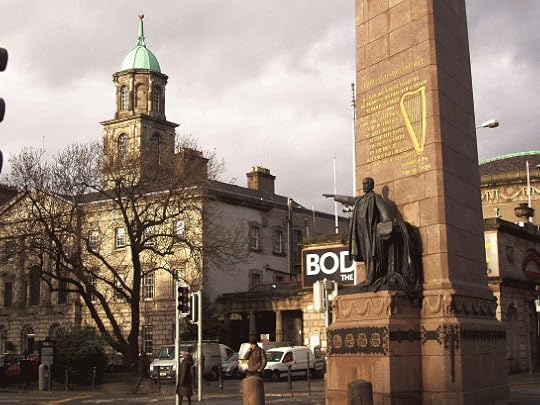 As we pass the burger joints, cinemas and hotels that line the top end of O’Connell Street, we come to another monument, this one to the ‘Uncrowned King of Ireland’, Charles Stewart Parnell.
As we pass the burger joints, cinemas and hotels that line the top end of O’Connell Street, we come to another monument, this one to the ‘Uncrowned King of Ireland’, Charles Stewart Parnell.
It’s a towering tribute to his life as a nationalist politician and the leader of the Irish Parliamentary Party, which fought for Irish nationalism through constitutional means.
Created by Irish-born sculptor Augustus Saint-Gaudens, the bronze statue of Parnell stands at the base of a granite pillar which rises 90 metres high.
There is a picture of British troops gathered round the monument after the Rising. They’re laughing and holding the captured rebel flag that had flown over the GPO. I’ve often wondered what Parnell would have made of that scene had he looked down from his plinth.
It’s ironic that he turned up for the unveiling of the O’Connell monument in 1882 at the other end of the street. Nine years later he would be dead, his life cut short by illness. O’Connell and Parnell, two giants of Irish history, now bookend Dublin’s greatest boulevard – a street that has seen so much and which can teach us all, if we would only take the time to look.
David, I’d listen to you the entire day, I mean it. And guys, if you like what you’ve read so far, do visit David’s blog.
If you fancy to learn contemporary Irish history while also enjoying a good story, David has written a series of three books (the fourth is soon to be published), set during Ireland’s War of Independence and the Civil War. He’s also written a modern crime novel, set in Dublin.
Here’s what I thought of the first book, Tan, but you bet I’ll keep you posted about what I think about the others as well!
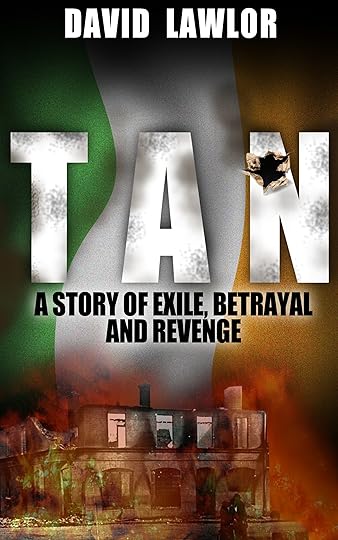
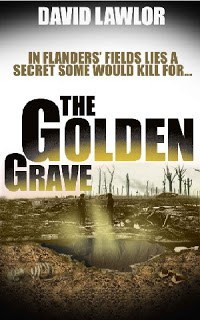
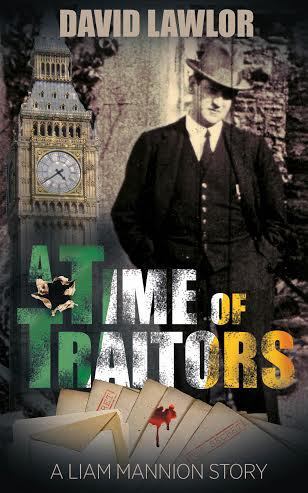
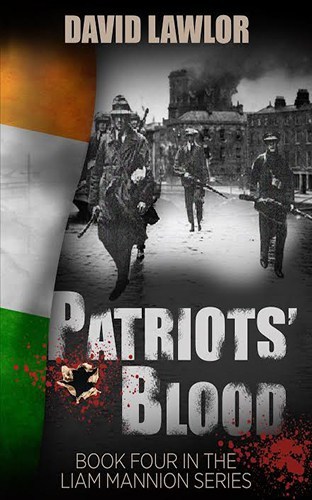
Amazon | Kobo | Barnes&Nobles | iBooks | Smashwords
DAVID SPEAKS ABOUT HIMSELF
I’m no historian, but I do like the subject (I even managed to get an Honours degree in it after much sweat and tears). I also like to write historical fiction. The idea is to collate interesting snippets from the past, things which spark an interest and maybe even a story or  two. I’ve worked as a journalist in national newspapers for 26 years. I have written three novels following my character Liam Mannion – Tan, set during the Irish War of Independence, The Golden Grave, which is set in the old battlefields of World War One and A Time of Traitors, which follows Liam as he tries to unmask a traitor within the ranks of the IRA.
two. I’ve worked as a journalist in national newspapers for 26 years. I have written three novels following my character Liam Mannion – Tan, set during the Irish War of Independence, The Golden Grave, which is set in the old battlefields of World War One and A Time of Traitors, which follows Liam as he tries to unmask a traitor within the ranks of the IRA.
In the course of my research, I have come across what I think are interesting facts, which you might like to read. Please feel free to contribute some of your own information, and let’s finally get the bit players of history that bit of recognition they truly deserve.
– David Lawlor
CONNETC WITH DAVID
Twitter | Goodreads | History in the Making
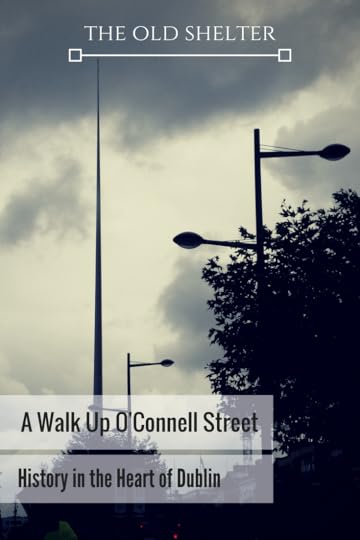
The post A Walk Up O’Connell Street – History in the Heart of Dublin appeared first on The Old Shelter.

